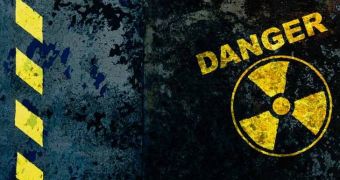Earlier this year, on February 16, the Department of Energy in the United States announced that excessive levels of radiation had been documented at a nuclear waste site in New Mexico. The site in question is known as the Waste Isolation Pilot Plant, and it presently accommodates for transuranic waste.
Recent news on the topic says that, according to a report shared with the public by the Department of Energy this past Thursday, this incident at said nuclear waste site in New Mexico could have been avoided.
As previously reported, traces of radiation were picked up by underground sensors at the Waste Isolation Pilot Plant on Friday, February 14. This increase in radiation levels most likely occurred as a result of a leak inside one of the facility's waste-storage vaults.
Despite the fact that these waste-storage vaults sit at a depth of about 2,000 feet (nearly 610 meters), some radioactive contamination somehow worked its way above ground. There is evidence to indicate that this happened due to the fact that the emergency filtration system failed to contain it. NPR informs that, in its report, the Department of Energy argues that the waste storage vault leaked partly due to improper maintenance, poor management, and unsuitable training and oversight.
What's more, there is little doubt that, had the emergency filtration system been working properly, traces of radioactive contamination would not have seeped into the above-ground environment, the Department goes on to say.
In light of these findings, it can be argued that the incident could have been prevented. Apparently, the ones to blame are both the contractor that runs the site and other organizations which should have done a better job monitoring the facility.
“The Board concludes that a thorough and conservatively considered hazard analysis, coupled with a robust, tested and well maintained HEPA filter capable exhaust ventilation system could have prevented the unfiltered above ground release that occurred on February 14, 2014,” the report reads.
Furthermore, “The Board also determined that weaknesses in oversight by the contract or, CBFO, Headquarters, and outside organizations missed opportunities to identify inadequacies in the safety basis, as well as the configuration management and maintenance of the U/G ventilation system at WIPP.”
Despite the fact that radioactive contamination originating from the storage vaults in the underground at the Waste Isolation Pilot Plant did work its way above ground, specialists stress that this did not at any time constitute a threat to public health.

 14 DAY TRIAL //
14 DAY TRIAL //